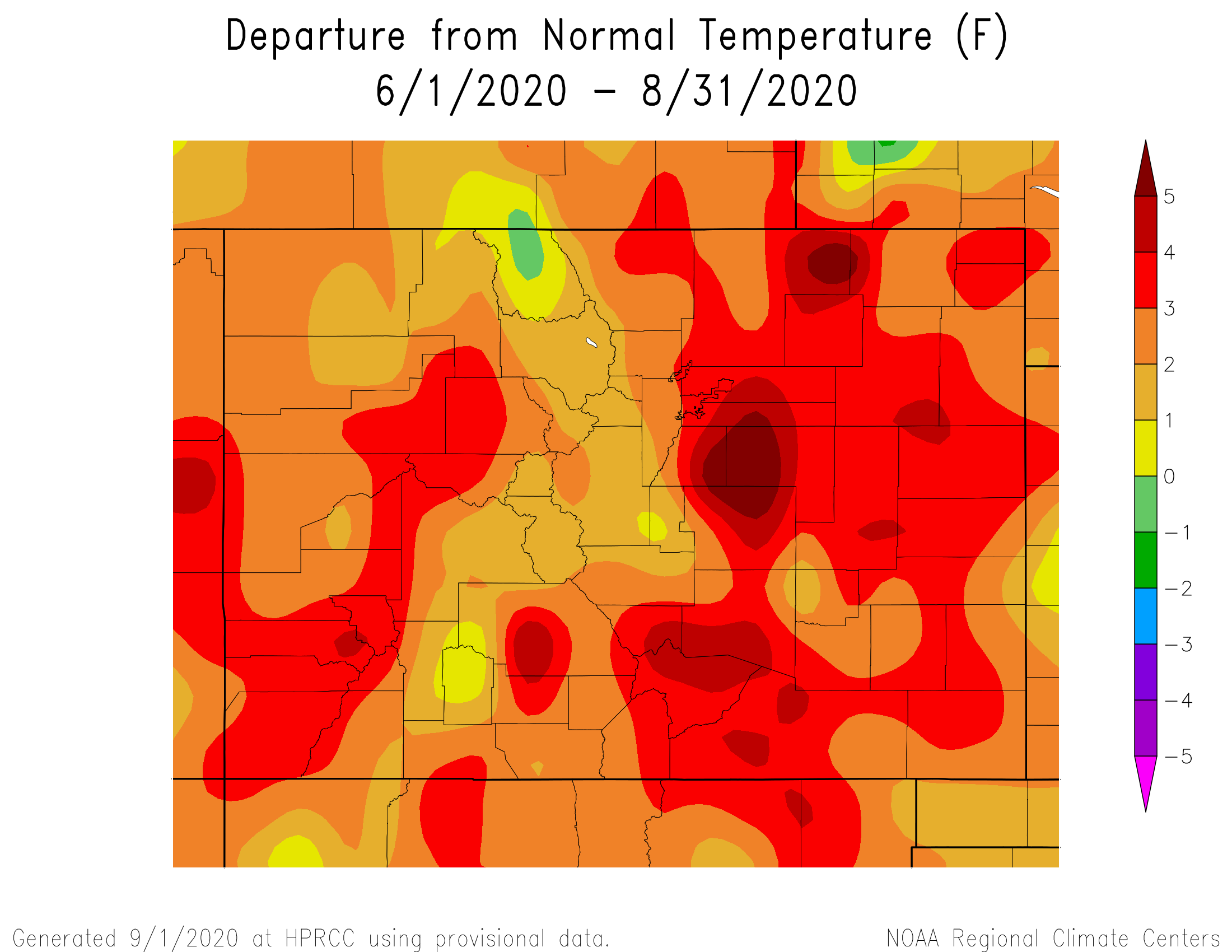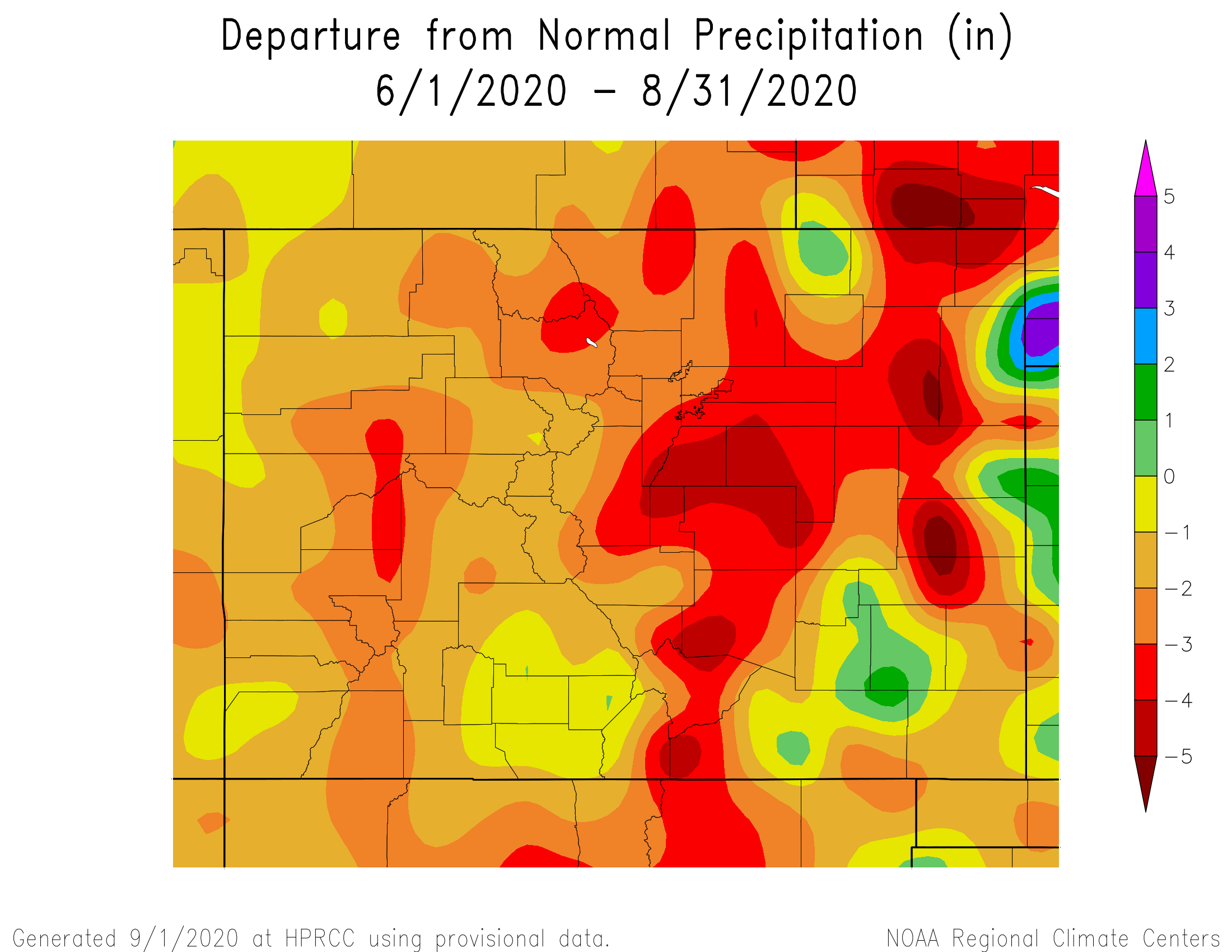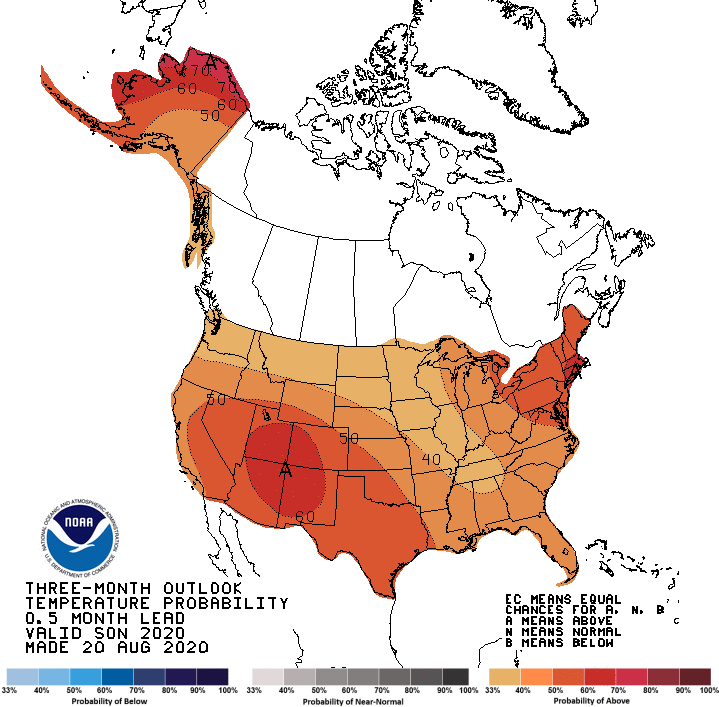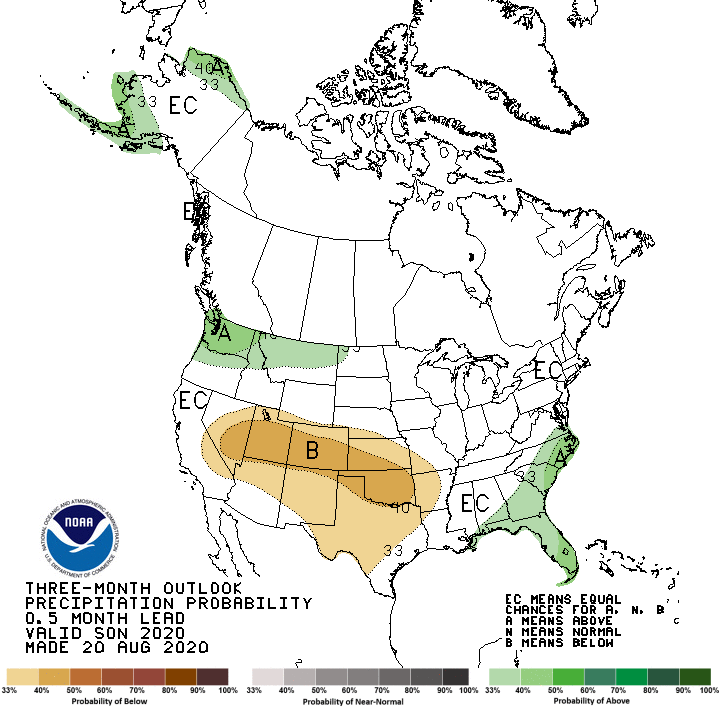The start of "Meteorological Summer 2020" (June, July and August) continued the roller coaster type of weather pattern as the previous month of May across south central and southeast Colorado, with periods of warm and dry conditions followed by periods of cool and wet conditions, as a few weather systems moved across the state. On June 9th, measurable snowfall was recorded across portions of south central and southeast Colorado, especially across Northern El Paso County and the Palmer Divide. June also brought a few days of severe weather across the region, and produced localized areas of heavy rainfall. July of 2020 continued the roller coaster type of weather pattern through the first half of the month, with hot and dry conditions followed by cooler and wetter conditions, especially across the southeast plains, where a few frontal passages brought bouts of severe weather to eastern Colorado. The latter portion of July saw an increase in monsoonal moisture across the state, with cooler and wetter conditions experienced into the end of the month. August of 2020 saw its share of severe weather across south central and southeast Colorado, most notably on August 5th, when destructive hail of up to 2 inches in diameter pounded southwestern portions of Colorado Springs. However, most of August of 2020 will be remembered for being generally hot and dry, with several major wildland fire starts across northern and western portions of Colorado, including the Pine Gulch fire in western Colorado, which has grown to be largest wildfire on record in Colorado.
For the Summer of 2020 as a whole, above to well above normal temperatures were experienced across all of south central and southeast Colorado, with mainly below to well below normal precipitation, save for portions of the southeast plains, which saw at or above normal precipitation. The following graphics indicate seasonal temperature and precipitation departures from normal across the state for the Summer of 2020.
 |
 |
The preliminary average temperature for the Summer of 2020 in Alamosa was 64.3 degrees. This is 2.0 degrees above normal and makes the Summer of 2020, tied with the Summer of 2018, as the 4th warmest Summer on record. This remains behind the warmest Summer, 2012, when the average Summer temperature was 65.3 degrees in Alamosa. Alamosa recorded 2.08 inches of precipitation through the Summer, which is 0.65 inches below normal. Alamosa did record of trace of snow on June 9th.
(click here for a more detailed Summer of 2020 Climate Summary in Alamosa)
The preliminary average temperature for the Summer of 2020 in Colorado Springs was 72.6 degrees. This is 4.3 degrees above normal and makes the Summer of 2020 the 3rd warmest Summer on record, just behind the Summer of 2011 and 2012 when the average Summer temperature was 73.3 degrees in Colorado Springs. Colorado Springs recorded 5.05 inches of precipitation through the Summer. This is 3.63 inches below normal and makes the Summer of 2020 the 20th driest on record. This is well behind the driest Summer, 1939, when 2.47 inches of precipitation was recorded in Colorado Springs. Colorado Springs recorded a trace of snow on June 9th, with the Colorado Springs Airport recording hail 4 times through out the Summer. .
(click here for a more detailed Summer of 2020 Climate Summary in Colorado Springs)
The preliminary average temperature for the Summer of 2020 in Pueblo was 77.2 degrees. This is 4.1 degrees above normal and makes the Summer of 2020, tied with the Summer of 2011, as the 3rd warmest Summer on record, just behind the Summers of 1970 and 2012 when the average Summer temperature was 77.8 and 77.4 degrees, respectively in Pueblo. Pueblo recorded 2.28 inches of precipitation through the Summer. This is 3.46 inches below normal and makes the Summer of 2020 the 10th driest Summer on record. This remains behind the driest Summer, 1939, when only 0.86 inches of precipitation was recorded in Pueblo. The Pueblo Airport recorded hail 3 times through out the Summer.
(click here for a more detailed Summer of 2020 Climate Summary in Pueblo)
Below is the Climate Prediction Center's (CPC) temperature and precipitation outlook for the Fall of 2020 (September, October and November), which indicates better chances of above normal temperatures and below normal precipitation across all of south central and southeast Colorado.
 |
 |